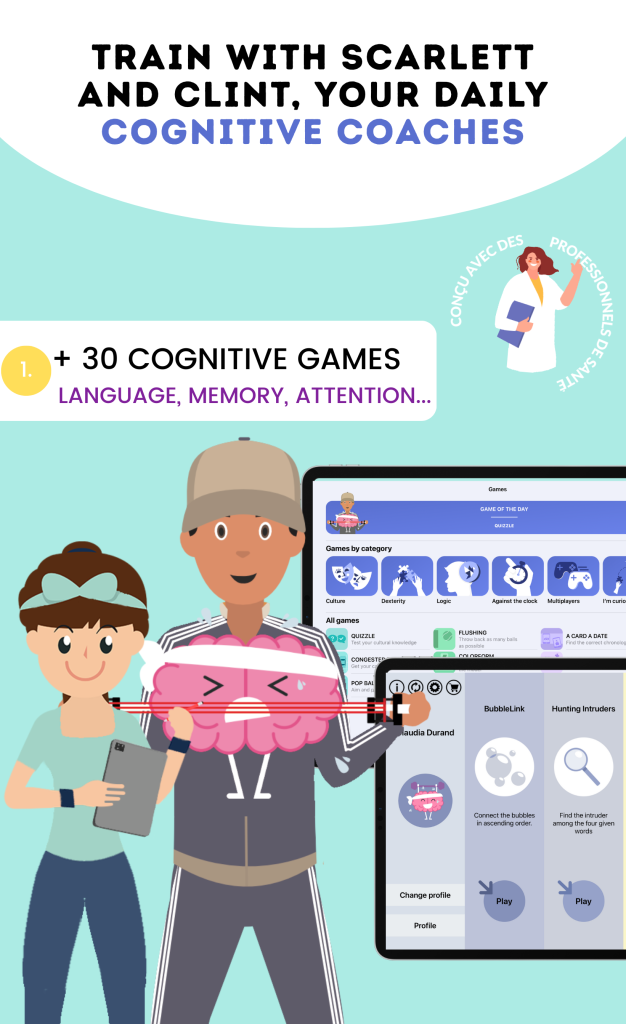Home care plays a crucial role in the lives of elderly people and individuals with disabilities. It allows them to stay in their homes, surrounded by their family and familiar environment, while receiving the care and assistance they need. However, home care professionals face many challenges in providing quality care. This is why it is essential to adopt innovative practices to improve the quality of home care.
Traditional Home Care Tools: Limitations and Challenges
Home care professionals have traditionally used tools such as paper forms and Excel spreadsheets to manage schedules and interventions. However, these tools have many limitations. Paper forms can be easily lost or damaged, leading to errors in care planning. Additionally, Excel spreadsheets can be difficult to update and share with other team members.
Managing schedules and interventions is also a major challenge for home care professionals. It is often difficult to organize timings based on patients’ availability and logistical constraints. Furthermore, coordinating different interventions and ensuring that each patient receives the necessary care can be complicated.
New Technologies in Home Care: What Are the Benefits?
New technologies, such as mobile applications and management software, offer many advantages for home care. These tools allow professionals to manage schedules and interventions more efficiently. They can easily update timings, share information with other team members, and receive real-time notifications.
Moreover, these digital tools help improve the quality of home care. Professionals can access patients’ medical information in real time, enabling them to provide personalized care tailored to each patient. Additionally, these tools facilitate communication between home care professionals, patients, and their relatives, strengthening trust and collaboration.
The Importance of Training for Home Care Professionals
Ongoing training is essential for home care professionals to help them integrate new technologies and innovative practices. It is important to train professionals on the use of digital tools and best practices in home care. This will enable them to improve their efficiency and quality of work.
Ongoing training also allows professionals to stay updated on the latest advancements in home care. They can thus acquire new skills and enhance their professional practices. Furthermore, ongoing training promotes the professional and personal development of home care professionals.
Innovative Practices in Scheduling and Intervention Management
Innovative practices in scheduling and intervention management, such as dynamic planning, can greatly improve the quality of home care. Dynamic planning allows for adjusting schedules based on patients’ needs and logistical constraints. This optimizes resource use and ensures that each patient receives the necessary care.
Additionally, dynamic planning helps reduce waiting times for patients. Professionals can easily adjust schedules based on emergencies and unforeseen events, improving the responsiveness and flexibility of home care.
How Digital Tools Improve the Quality of Home Care

Digital tools play an increasingly essential role in improving the quality of home care, offering numerous benefits for both healthcare professionals and patients. Here are some ways these tools are transforming the home care experience:
1. Real-time Monitoring of Patients’ Health Status
Care tracking applications and remote monitoring devices allow healthcare professionals to continuously monitor patients’ health status. For example, wearable devices can measure vital parameters such as blood pressure, heart rate, glucose levels, body temperature, and other important health indicators. These tools provide the advantage of delivering accurate, real-time data, enabling caregivers to act quickly upon detecting signs of health deterioration.
Remote monitoring devices can also send automatic alerts in case of anomalies, such as exceeding critical thresholds in vital parameters. This allows for immediate intervention, minimizing the risks of complications and unnecessary hospitalizations. Healthcare professionals can thus adapt care more quickly and effectively.
2. Facilitation of Communication and Coordination Among Home Care Professionals
Another major advantage of digital tools is their ability to facilitate communication among the various professionals involved in home care. The integration of collaborative platforms and secure communication applications allows caregivers, doctors, nurses, and other professionals to share medical information in real time. This ensures better continuity of care, as each professional has access to updated data regarding treatments, medical histories, and patient preferences.
This information sharing also simplifies the decision-making process by allowing all stakeholders to work with the same data. This reduces the risks of medical errors, such as double medication prescriptions or missed treatments, and improves the quality of care coordination, making the process smoother for patients.
3. Reduction of Medical Errors and Improvement of Safety
Digital tools also contribute to reducing medical errors by automating certain critical tasks. For example, medication reminders sent via mobile applications or integrated systems allow caregivers to rigorously follow the medication schedule. This helps reduce the risk of forgetting or making errors in medication administration, which is crucial for patient safety, especially for those taking multiple complex treatments.
Smart devices, such as fall monitors or motion sensors, can also detect falls or other critical events. These tools can send an alert to relatives or healthcare professionals immediately after the incident, allowing for rapid intervention to prevent any major complications.
4. Monitoring of Behaviors and Emotional Well-being
In addition to medical data, digital tools also allow for monitoring patients’ emotional well-being. Some applications offer features to record observations on the emotional state of seniors or signs of depression and anxiety. This information can be shared with caregivers or family members to assess and consider the patient’s mental health. Rapid identification of signs of stress or social isolation allows for corrective actions to support the senior’s mental health.
5. Improvement of Patients’ Autonomy
Assistive technologies can also be used to enhance patients’ autonomy in their daily care. For example, some applications allow seniors to track their medication routine, set reminders for meals, monitor their physical activities, or even schedule their medical appointments. This helps patients feel more in control of their health and care, which is particularly important for preserving their dignity and well-being.
Smart home devices (such as thermostats, switches, or automated blinds) allow seniors to control their environment (temperature, light, home security) without needing to move around, contributing to their comfort and independence.
6. Facilitated Access to Healthcare Professionals via Telemedicine
Telemedicine services have become essential in home care, allowing seniors to consult doctors or specialists remotely. Especially for those with mobility issues or who live in remote areas, telemedicine offers a practical and quick solution for obtaining medical advice, adjusting treatments, or asking urgent questions about their health status. Digital tools make these consultations more accessible and less stressful, allowing patients to receive quality care without leaving their homes.
The Benefits of Digital Communication with Patients and Their Relatives
Digital communication, such as messaging applications and video calls, offers many advantages for improving communication between home care professionals, patients, and their relatives. These tools allow professionals to stay in touch with patients and respond quickly to their needs.
Moreover, digital communication facilitates coordination among the various stakeholders involved in home care. Professionals can easily share patients’ medical information with doctors and other healthcare professionals, improving the overall management of patients.
The Benefits of Data Collection and Analysis for Home Care
Data collection and analysis are essential for improving the quality of home care. This data can be used to identify trends and potential issues, allowing for adjustments in home care practices and processes.
Additionally, data collection and analysis enable the evaluation of the effectiveness of interventions and the identification of areas for improvement. This allows professionals to make informed decisions and optimize the quality of home care.
The Challenges of Implementing Innovative Practices in Home Care
Implementing new practices and technologies in home care can be challenging. It is often necessary to train professionals on the use of new tools and best practices in home care. Furthermore, integrating these new practices into existing processes can be difficult.
It is also important to consider the needs and preferences of patients when implementing innovative practices. Involving patients and their relatives in the decision-making process is essential to ensure their adherence and satisfaction.
How Our Toolbox Transforms Home Care to Better Meet Patients’ Needs.
Our toolbox offers a comprehensive solution to help home care professionals integrate innovative practices and new technologies. Our digital tools enable effective management of schedules and interventions, improve communication with patients and their relatives, and collect and analyze data to enhance the quality of home care.
By using our toolbox, home care professionals can improve their efficiency, quality of work, and patient satisfaction. They can provide personalized care tailored to each patient while ensuring continuity of care and reducing risks for patients.
In conclusion, adopting innovative practices and new technologies is essential for improving the quality of home care. It is important to train professionals on the use of new tools and best practices in home care. Furthermore, involving patients and their relatives in the decision-making process is crucial to ensure their adherence and satisfaction. By using our toolbox, home care professionals can enhance their efficiency, quality of work, and patient satisfaction.





